Allergist Gainesville VA: Can Allergies Cause Dental Problems?
Dr. Kletz & Dr. Gondi, Trusted Gainesville Allergists, Discuss Dental Problems and Allergies
 As allergists that Gainesville, VA calls upon, we know that when one thinks about allergies and allergy symptoms, dental problems usually do not come to mind. In fact, most people tend to separate dental and medical problems into two distinct categories. Medical diseases can and do influence your dental health. Most people know that certain heart defects and murmurs may require premedication with antibiotics in order to prevent subacute bacterial endocarditis. Patients with GERD (gastroesophageal reflux disease), Sjögren’s syndrome, anorexia, and bulimia are more prone to cavities of the teeth. There are many more medical conditions which can have profound implications on the health of one’s teeth which will not be discussed.
As allergists that Gainesville, VA calls upon, we know that when one thinks about allergies and allergy symptoms, dental problems usually do not come to mind. In fact, most people tend to separate dental and medical problems into two distinct categories. Medical diseases can and do influence your dental health. Most people know that certain heart defects and murmurs may require premedication with antibiotics in order to prevent subacute bacterial endocarditis. Patients with GERD (gastroesophageal reflux disease), Sjögren’s syndrome, anorexia, and bulimia are more prone to cavities of the teeth. There are many more medical conditions which can have profound implications on the health of one’s teeth which will not be discussed.
What about allergies? Can they cause dental problems? The simple answer to this question is: Yes
Many children with hay fever (allergic rhinitis) have nasal congestion as a major feature of their disease. The nasal congestion frequently causes these children to become “mouth breathers,” since they are unable to breathe through their noses. As the children grow, they develop a narrow high upper arched palate in their mouths which results in malocclusion (i.e., poor bite) of their teeth. The teeth grow in crooked usually resulting in the need for costly braces by an Orthodontist. Seeing a board certified allergist like the ones at Black & Kletz Allergy in the Gainesville, VA, Falls Church, VA , and Tysons Corner, VA areas can prevent this type of dental problem in children if addressed early on. The allergists at Black & Kletz Allergy would perform a comprehensive history and physical examination and likely do allergy testing to find out if and what the child is allergic to in the environment. Allergies to dust mites, molds, pollens (e.g., trees, grasses, weeds), pets, and cockroaches are very common allergens that can cause chronic nasal congestion. There are other nasal conditions, such as nasal polyps, which are usually due to an underlying allergy that can also cause chronic nasal congestion. After fully evaluating the child, a treatment plan would be discussed with the parent(s) which may include measures to avoid the offending allergen, use medications in the forms of syrups, powders, tablets, capsules, nasal sprays, eye drops, and/or begin a course of allergy immunotherapy (i.e., allergy shots, allergy injections, allergy desensitization). Allergy immunotherapy or allergy shots are very effective as they work in 80-85% of the individuals taking them. They are given to people ranging in age from young children through the elderly. They have been given in the U.S. for over 100 years. Treating the hay fever early in its course is very effective in preventing the dental malocclusion that occurs too often in untreated individuals with this condition.
Another problem that people face when it comes to allergies and dentistry is the common “I am allergic to Novocain” response that dentists hear over and over again from patients. We, as allergists near Gainesville, VA, also hear this common complaint. Dentists frequently have to use a “numbing medicine” before they can do certain dental procedures such as root canals, pulling teeth, dental implants, putting in crowns, etc. in order to prevent pain from occurring in their patients. Many times the “allergy” symptoms described are really a side effect of the Epinephrine (adrenaline) that is frequently mixed in with the “numbing medicine” rather than a true allergy to the “numbing medicine” itself. Epinephrine is usually mixed in with the “numbing medicine” as a way to constrict the small blood vessels in the mouth which helps prevent excessive bleeding. The most common “numbing medicines” or local anesthetics used are categorized as “Caine drugs.” (See “Medication Allergies”). Some examples of “Caine drugs” include Novacain (procaine), Xylocaine (lidocaine), Carbocaine (mepivacaine), Marcaine (bupivacaine), and Pontocaine (tetracaine). Some individuals are truly allergic to the local anesthetic and some are even allergic to the preservatives found in the local anesthetic. It turns out, however, that most individuals who think they are allergic to a “Caine drug” usually are not when skin tested by an allergist. It is important, however, to see a board certified allergist and have skin testing performed to rule out a “Caine drug” allergy, as such an allergy can be very serious and potentially life-threatening. The allergy doctors in the Gainesville, VA, Falls Church, VA, and Tysons Corner, VA areas at Black & Kletz Allergy routinely see patients with this potential allergy and skin test them to a specific local anesthetic in the “Caine drug” class at one of our 3 office locations in theWashington, DC, Northern Virginia, and Maryland metropolitan area. If the skin testing to a specific “Caine drug” is negative, then the allergist will let your dentist know that is fine to use that particular medication. Note that it is possible to be allergic to one specific “Caine drug” but not another specific “Caine drug.” (Example: One can be allergic to Novacain but not Xylocaine).
The board certified allergists at Black & Kletz Allergy treat both adults and children and will answer any questions you have concerning local anesthetic allergy testing as well as other medication allergy testing such as penicillin testing. Black & Kletz Allergy has locations in Washington, DC, McLean, VA (Tysons Corner, VA), and Manassas, VA. We offer on-site parking at each location and the Washington, DC and McLean offices are also Metro accessible. There is a free shuttle that runs between our McLean office and the Spring Hill metro station on the silver line. If you would like to make an appointment with an allergist, please call us or alternatively, you can click Request an Appointment and we will respond within 24 hours by the next business day. Black & Kletz Allergy has been providing quality allergy care to the DC metro area for more than a half century.

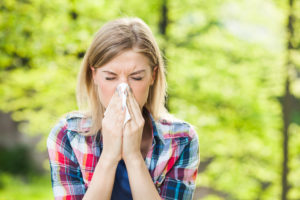 Well it is the middle of March in
Well it is the middle of March in 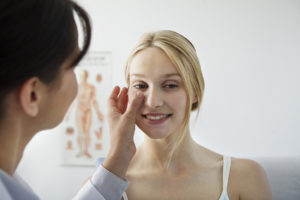 More than 22 million people in the U.S. suffer from
More than 22 million people in the U.S. suffer from 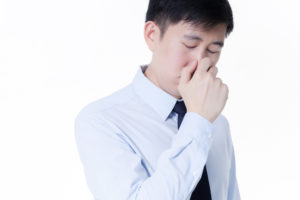 People who have allergies are more prone to developing acute, chronic, and recurrent
People who have allergies are more prone to developing acute, chronic, and recurrent 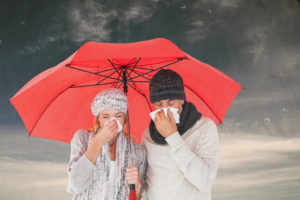 Serving as
Serving as 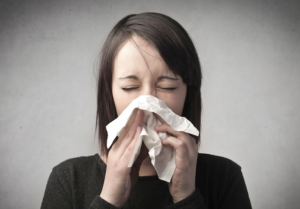 As Winter begins and the temperatures plummet, the cold air can cause havoc on individuals with certain allergic and immunologic conditions that are caused or made worse with cold weather. Some of the allergic and immunologic conditions that are exacerbated by cold weather include cold-induced
As Winter begins and the temperatures plummet, the cold air can cause havoc on individuals with certain allergic and immunologic conditions that are caused or made worse with cold weather. Some of the allergic and immunologic conditions that are exacerbated by cold weather include cold-induced